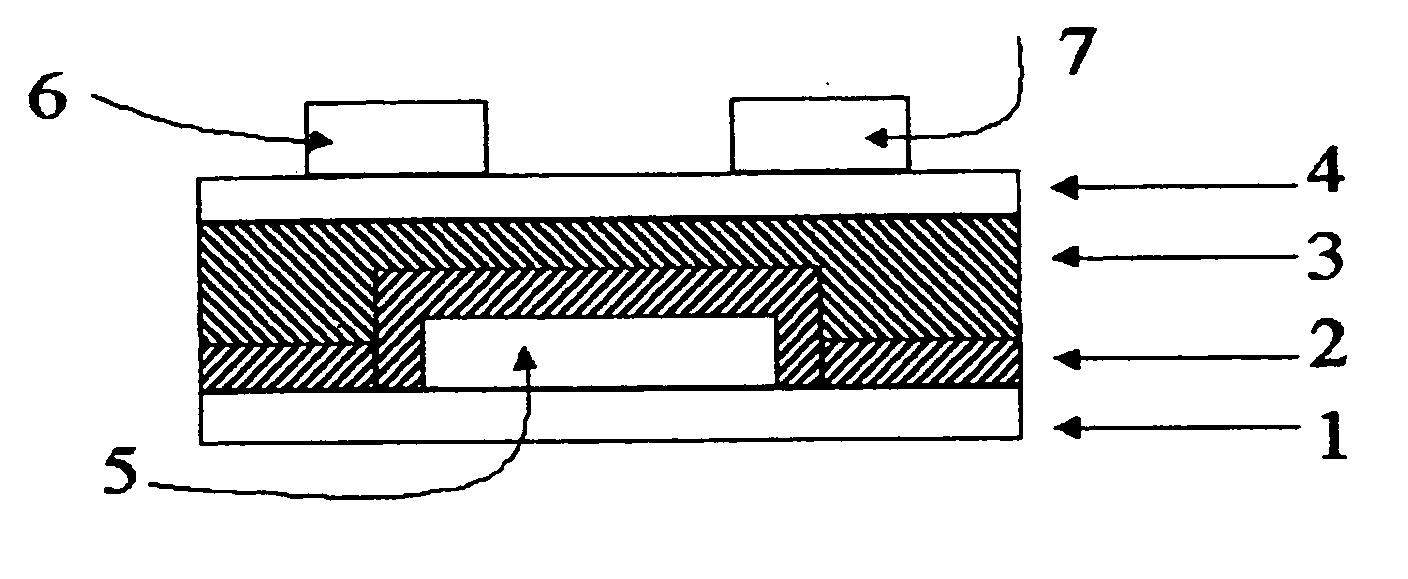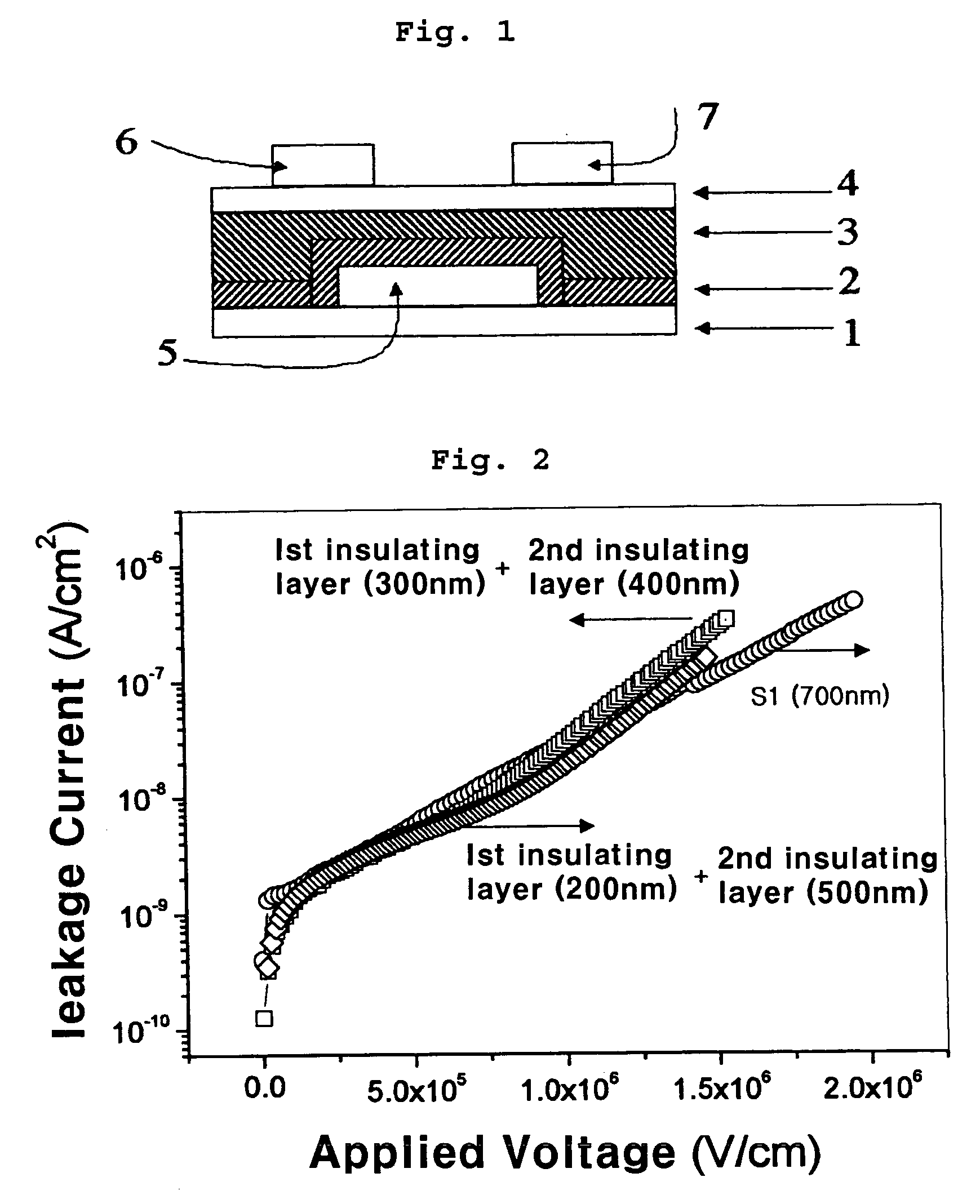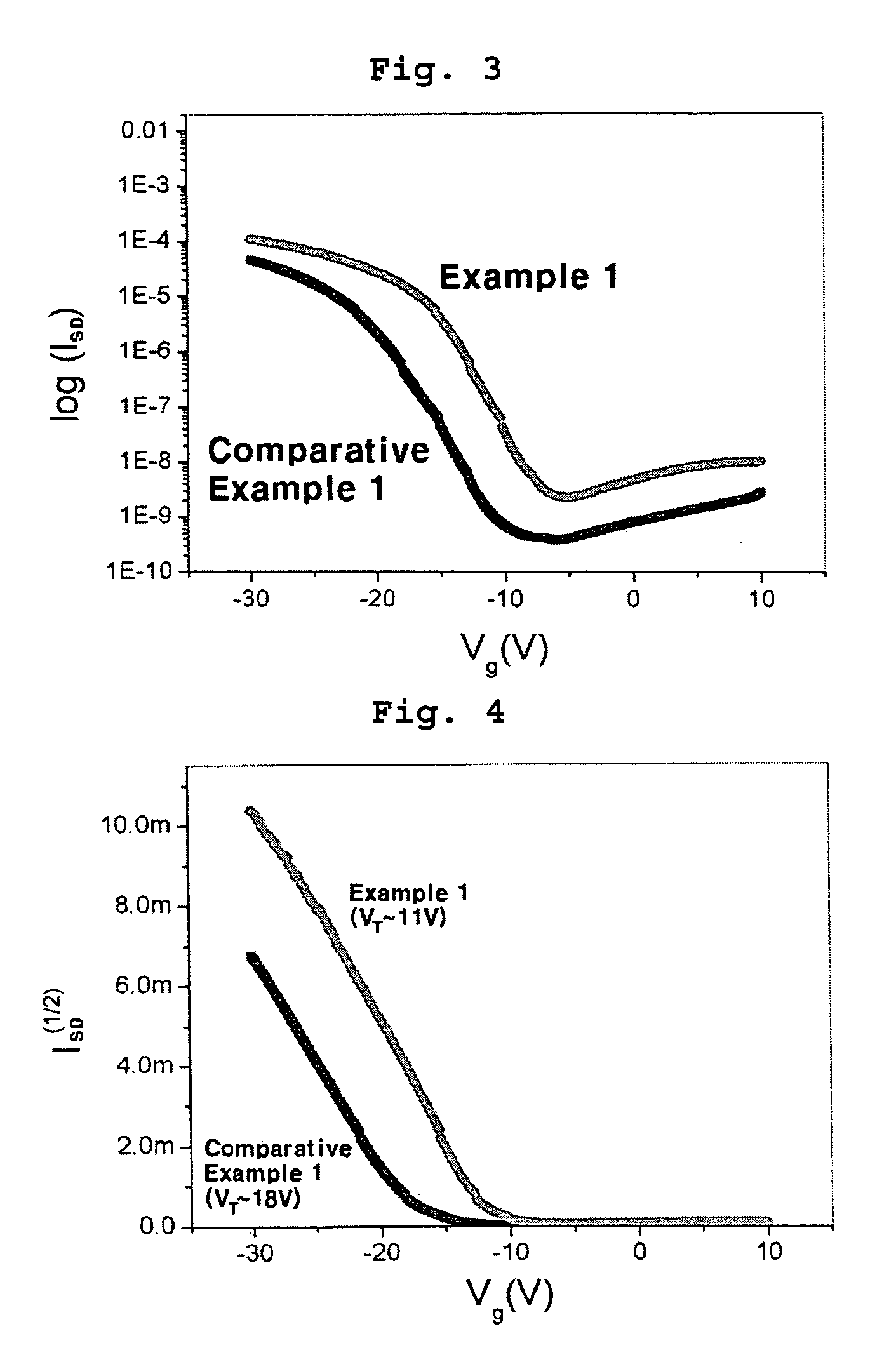Organic thin film transistor comprising multi-layered gate insulator
a thin film transistor and gate insulator technology, applied in transistors, thermoelectric devices, solid-state devices, etc., can solve the problems of unsatisfactory charge mobility, lower charge mobility achieved by n. jackson, and so as to achieve lower driving and threshold voltages, the effect of increasing the charge mobility
- Summary
- Abstract
- Description
- Claims
- Application Information
AI Technical Summary
Benefits of technology
Problems solved by technology
Method used
Image
Examples
example 1
On a glass substrate having a gate electrode made of aluminum, a first insulating layer was formed in the same manner as in Preparative Example 2. A cyclohexanone solution (100 wt %) of a polymer (S1) represented by Formula 3 was prepared, and spin-coated on the first insulating layer to form a 5000 Å thick film, which was then baked at 100° C. for 1 hour in a nitrogen atmosphere, to prepare a two-layered gate insulating film having a total thickness of 700 nm. Then, a 700 Å thick pentacene organic active layer was formed on the gate insulating film by using an OMBD (Organic Molecular Beam Deposition) process, which is performed under 2×10−6 torr with a deposition rate of 0.3 Å / sec while maintaining a substrate temperature at 80° C. On the active layer thus obtained, a source / drain electrode was formed by a top contact method using a shadow mask having a channel length of 100 μm and a channel width of 1 mm, thereby fabricating an OTFT. For the OTFT thus obtained, a dielectric const...
example 2
An OTFT was prepared in the same manner as in Example 1, with the exception that the first insulating layer was formed using the composition and the solvent under the conditions same as in Preparative Example 3. For the OTFT, a dielectric constant per unit area (C0: nF / unit area), threshold voltage, Ion / Ioff value, and charge mobility were measured in accordance with the same procedures as Example 1. The results are shown in Table 2 below.
example 3
An OTFT was prepared in the same manner as in Example 1, with the exception that a 300 nm-thick first layer and a 400 nm-thick second layer were adopted. For the OTFT, a dielectric constant per unit area (C0: nF / unit area), threshold voltage, Ion / Ioff value, and charge mobility were measured in accordance with the same procedures as Example 1. The results are shown in Table 2 below.
PUM
| Property | Measurement | Unit |
|---|---|---|
| dielectric constant | aaaaa | aaaaa |
| threshold voltage | aaaaa | aaaaa |
| dielectric constant | aaaaa | aaaaa |
Abstract
Description
Claims
Application Information
 Login to View More
Login to View More - R&D
- Intellectual Property
- Life Sciences
- Materials
- Tech Scout
- Unparalleled Data Quality
- Higher Quality Content
- 60% Fewer Hallucinations
Browse by: Latest US Patents, China's latest patents, Technical Efficacy Thesaurus, Application Domain, Technology Topic, Popular Technical Reports.
© 2025 PatSnap. All rights reserved.Legal|Privacy policy|Modern Slavery Act Transparency Statement|Sitemap|About US| Contact US: help@patsnap.com



